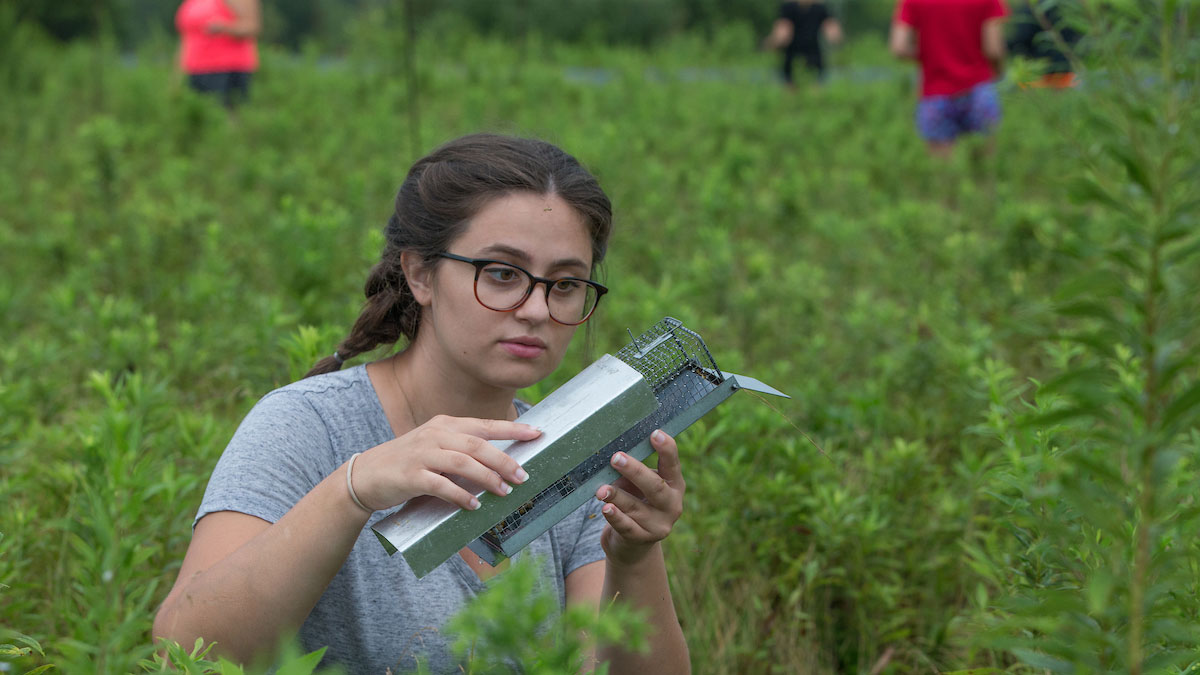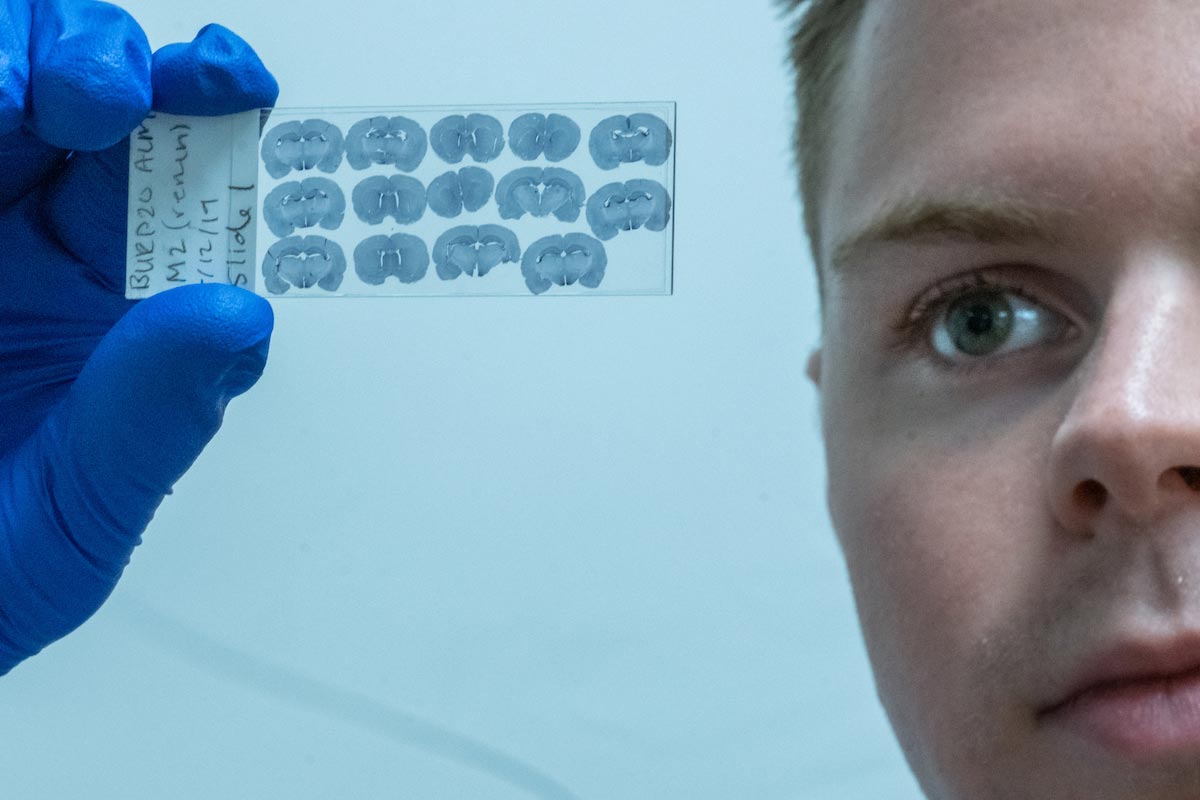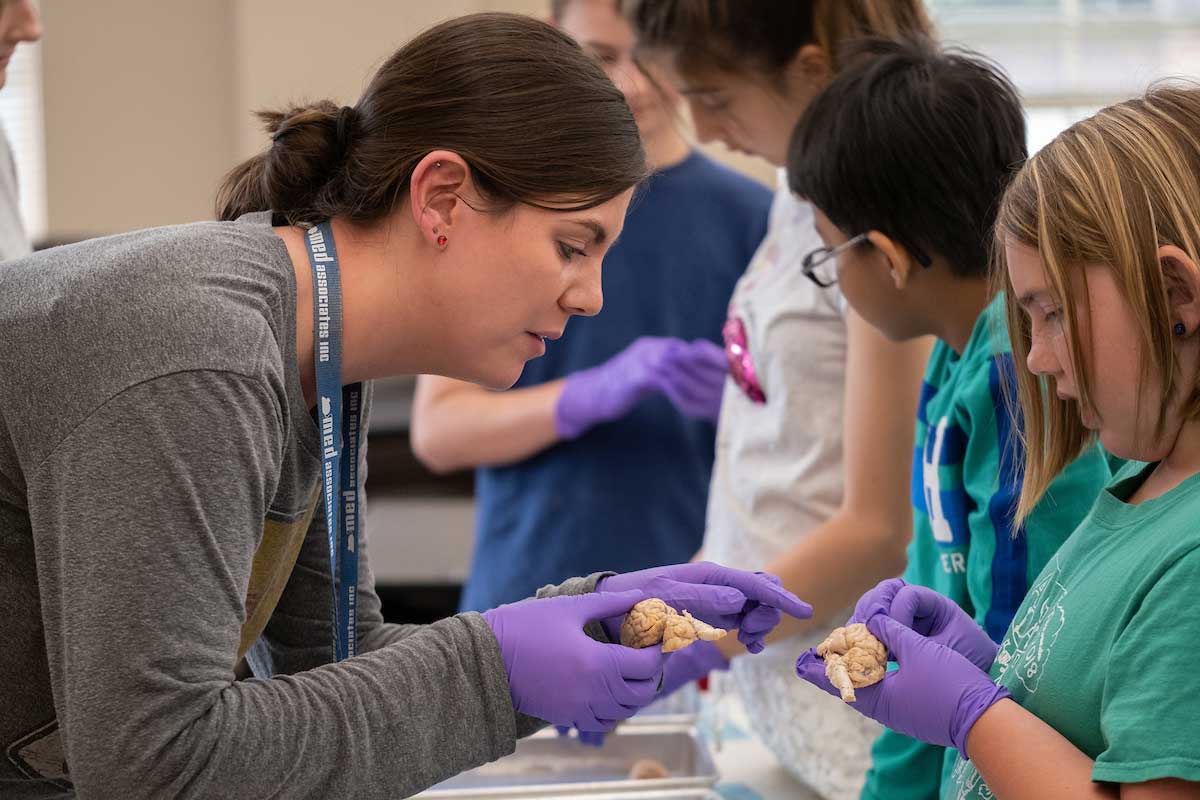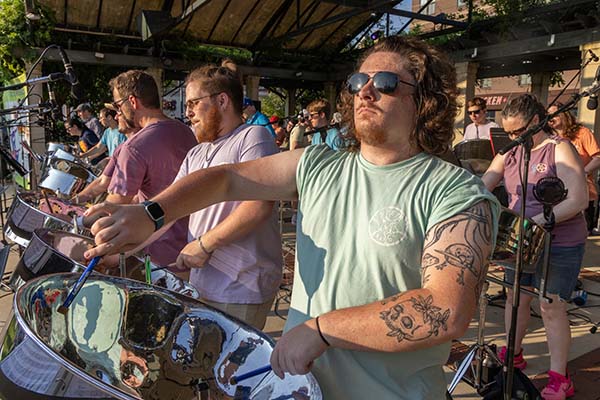
Center for Animal Behavior
Center for Animal Behavior (CAB), in the College of Arts & Science, provides opportunities to study animal behavior at many levels. We bring together core faculty from several Miami University departments to encourage interest in animal behavior, as well as to promote research and education in behavioral ecology and evolution, neuroscience, and animal learning.
"Behavior is the window through which we can view all of biology."
- Dr. John Vandenburgh
About the Center for Animal Behavior

We:
- promote collaborative opportunities in behavioral science
- provide excellent opportunities for undergraduates and graduates to study animal behavior
- increase awareness and interest in animal behavior to teachers, school children, and the community at large

CAB offers activities for:
- children
- high school students
- science teachers
We are committed to sharing our research results in animal behavior with younger scientists, such as K-12 students as well as teachers.
We welcome local K-12 teachers to attend our seminars and other events, particularly those related to animal behavior, including:
- Hefner Lecture Reception (held each October)
- Undergraduate Research Forum (held each April)
The research forum highlights exciting new animal behavior research by Miami University undergraduates.
Miami University Butterfly Gardens
Miami University and its students, staff, and faculty are devoted to supporting a sustainable campus through environmental restoration projects. Miami's butterfly gardens all have flowering plants that are native to the area and provide homes and food for native animal species:
- Pearson Plaza Butterfly Garden
- Upham Hall Bluestone Gardens
- Rec Center Butterfly Garden
- Natural Areas Bird Blind Butterfly Gardens
Butterflies, hummingbirds, other birds, and a number of species of bees are found on our gardens.
Host plants are plants that the butterfly lays the eggs on and the caterpillar feeds upon. Nectar plants are for the adults to feed on. Nectar is provided by the flowers. Many butterflies are host specific. Monarchs, for example, need milkweed for a host plant and zebra swallowtail butterflies need paw-paw to lay eggs.
Promote Environmental Restoration!
Help promote environmental restoration at home! If you are interested in starting a butterfly garden of your own, some local nurseries include:
Pearson Plaza Butterfly Garden
The Pearson Plaza Butterfly Garden is a certified Monarch Waystation, and students, staff, and faculty participate in collecting data on the Great Monarch Migration. Many of the plants in this garden have been chosen because they are either host plants, nectar plants, or both. The following is more detailed information about these plants, including their scientific name, cultivar(s), the pollinators(s) that are primarily attracted to each plant, and some information about the conditions the plants need to thrive.
Cultivar: 'Blue Muffin'
Notes: This shrub has showy fruit, and will attract birds and butterflies. This is a host plant for Baltimore checkerspot, spring azure, Henry's elfin butterflies and hummingbird moths.
Cultivars: 'Husker Red', 'Prairie Dusk'
Notes: This plant is great if you don't want to put too much effort into your garden, and will attract hummingbirds, as well as butterflies. Although not the plant on which females lay their eggs, half-grown Baltimore checkerspot caterpillars often seek Penstemon as a food source.
Cultivars: 'Jacob Kline', 'Raspberry Wine', 'Coral Reef'
Notes: As the name would suggest, beebalm is wildly popular for many types of bees.
Cultivar: 'Whirling Butterflies'
Notes: As the cultivar name would suggest, this plant attracts many types of butterflies.
Cultivar: 'Rudbeckia'
Notes: This plant tolerates clay and drought. This plant is great for attracting butterflies.
Cultivar: 'Kobold'
Notes: This plant is resistant to pests and disease, and is a great nectar plant for butterflies including painted ladies. The birds feast on the seeds when plants are done blooming.
Cultivar: 'Pink Delight'
Notes: As the name would suggest, the butterfly bush is good for providing nectar for butterflies.
Cultivar: native
Notes: This is one of the three milkweeds native to this area, the only host plant for monarchs. It has beautiful orange blooms. As the name would suggest, this plant is perfect for butterflies!
Cultivar: native
Notes: Because of its red coloring, this flower will attract hummingbirds as well as butterflies.
Cultivar: 'Brilliantissima'
Notes: This shrub is great for resisting erosion and can grow in clay soil.
Cultivar: 'David'
Notes: This plant will attract hummingbirds and butterflies. Watch out — deer love phlox.
Cultivars: 'Tiny Monster', 'Rozanne'
Notes: Any plant in the Geranium genus will attract butterflies. Native perennial geraniums like these are the best.
Cultivar: 'Solar Cascade'
Notes: This is a great fall blooming plant for monarchs to nectar on as they migrate south. This is a hardy plant primarily attracts butterflies, as well as deters deer.
Cultivar: 'Butterflies'
Notes: This tree, as the name would suggest, is great for butterflies.
Cultivar: native
Notes: Like other milkweeds, the common milkweed is the only host plant for monarch.
Cultivar: 'Cinderella'
Notes: Milkweed of any kind is perfect for monarch butterflies. They use milkweed as a host plant, i.e. lay their eggs on it. Once the caterpillars hatch, they eat the milkweed on which they were born.
Cultivars: 'Wood's Pink', 'Wood's Light Blue', 'Wood's Purple'
Notes: These beautiful, colorful flowers will attract butterflies to your garden. They are one of the fall blooming flowers that monarch butterflies can use during their migration to Mexico.
Cultivar: 'Vivid'
Notes: This plant is a hummingbird-, bumblebee-, and carpenter-bee-magnet for your garden.
Cultivar: 'Peegee'
Notes: This shrub is native to China and Japan, and will bloom late into summer. It also serves as a nectar plant for native butterflies and bees.
Cultivar: 'Purple Sensation'
Notes: This flower (which is in the family of onions and leeks) is great for attracting butterflies as well as bees.
Cultivar: 'Magnus'
Notes: This hardy plant can grow in just about any kind of soil, are resistant to deer, and will attract butterflies. It is a host plant for silvery checkerspot.
Cultivar: native
Notes: We've seen cedar waxwings feeding on the berries on this tree. This beautiful flowering tree can survive in clay soil or in heavily polluted air. It is a host plant for the spotted purple caterpillar, striped hairstreak, Lorquin's admiral, and Weidemeyer's admiral.
Cultivar: 'Becky'
Notes: This plant will tolerate rabbits and deer, and attract butterflies.
Cultivar: native
Notes: While good as a host plant for butterflies in general, they are the only host plant for spicebush swallowtail butterflies.
Cultivar:
Notes: This, like many other asters, brings butterflies to a garden.
Cultivar: 'Autumn Joy'
Notes: Even in poor or average soil, this plant will attract butterflies.
Cultivar: 'Sunshine Daydream'
Notes: This summer-blooming plant is great for butterflies!
Cultivar: 'Henry Eilers'
Notes: These flowers are most popular among a variety of bees, as well as small and medium sized butterflies.
Cultivars: 'Atomic Red', 'Madame Galen'
Notes: These red/orange blooms are great for attracting hummingbirds. The plant is a larval host for the trumpet vine sphinx moth.
Cultivars: 'Royal Candles', 'Sunny Border Blue'
Notes: Use this plant along garden borders or rocky gardens. It will tolerate rabbits and deer and is attractive to both bees and butterflies.
Cultivar: 'Snow Fountains'
Notes: This beautiful cherry tree is primarily pollinated by bees. It only blooms for a few days out of the year, but it is stunningly beautiful.
Cultivar: 'Moonshine'
Notes: This full-sun, summer-blooming plant is great for butterflies.
Graduate Studies
The Department of Biology and the Department of Psychology have very active groups of faculty, post-doctoral fellows, and graduate students investigating a variety of mechanistic, ecological, and evolutionary questions in animal behavior. Some of us conduct all of our research in the laboratory, some primarily work in the field, while others combine lab and field studies.
Learn more about our:
Faculty Research Interests
- aggressive, mating, and escape behaviors in insects
- animal movement and dispersal
- anatomy and electrophysiology of simple neural circuits
- arachnology
- arthoprod predators
- behavioral ecology
- behavioral interactions
- behavioral neurobiology
- biodiversity of spiders
- chemical neuromodulators
- dominance rank
- endogenous opiate effects
- evolution of sociality
- evolutionary ecology
- genetic techniques to estimate parentage
- habitat fragmentation effects on animal movement
- herbicide/pesticide effects on behavior and reproduction
- hormonal control mechanisms
- inbreeding effects on behavior and reproduction
- insect-plant interactions
- landscape ecology
- mammalogy
- maternal behavior
- mating systems
- motivational states
- neural mechanisms
- neuroendocrinology
- neuroendocrinology of lactation
- population genetics
- predator-prey interactions
- reproduction
- reproductive state
- sensorimotor integration
- small mammals
- social behavior
- social organization
- social structure
- survival

